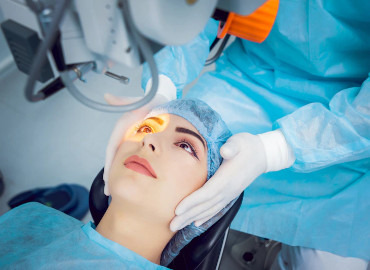
Each day, your eyes act like a camera, using the lens to bring into focus the various images and words you see. A Cataract develops when the clear lens of your eye gradually becomes cloudy, which can make your vision blurry and produce an increase in glare. Cataract occurs due to ageing, however trauma, Inflammation, Diabetes, Steroids, previous eye surgery, exposure to U.V. light could be the other risk factors aggravating cataract. If your vision is getting cloudy, if you are losing your colour perception, if you are having trouble reading or with your night vision, you may be experiencing the early stages of developing cataracts. In general, when you have difficulty with your vision during your daily activities, it is time to think about cataract surgery.
Surgery is the only available option
The surgeon will remove the cloudy lens through a tiny incision and replace it with an Intra Ocular Lens (IOL). The lens is design to correct your vision so you are less reliant on glasses or contact lenses after the surgery. Some IOL can correct astigmatism and near vision.

Cataract Surgery is usually perform as a day care procedure with no needles and stitches. In most cases only local anaesthesia is required. You're likely to be able to return to normal activities within a day or two, with improved vision.
-
Nuclear Cataracts
-
Cortical Cataracts
-
Posterior Subcapsular Cataracts
-
Congenital Cataracts

